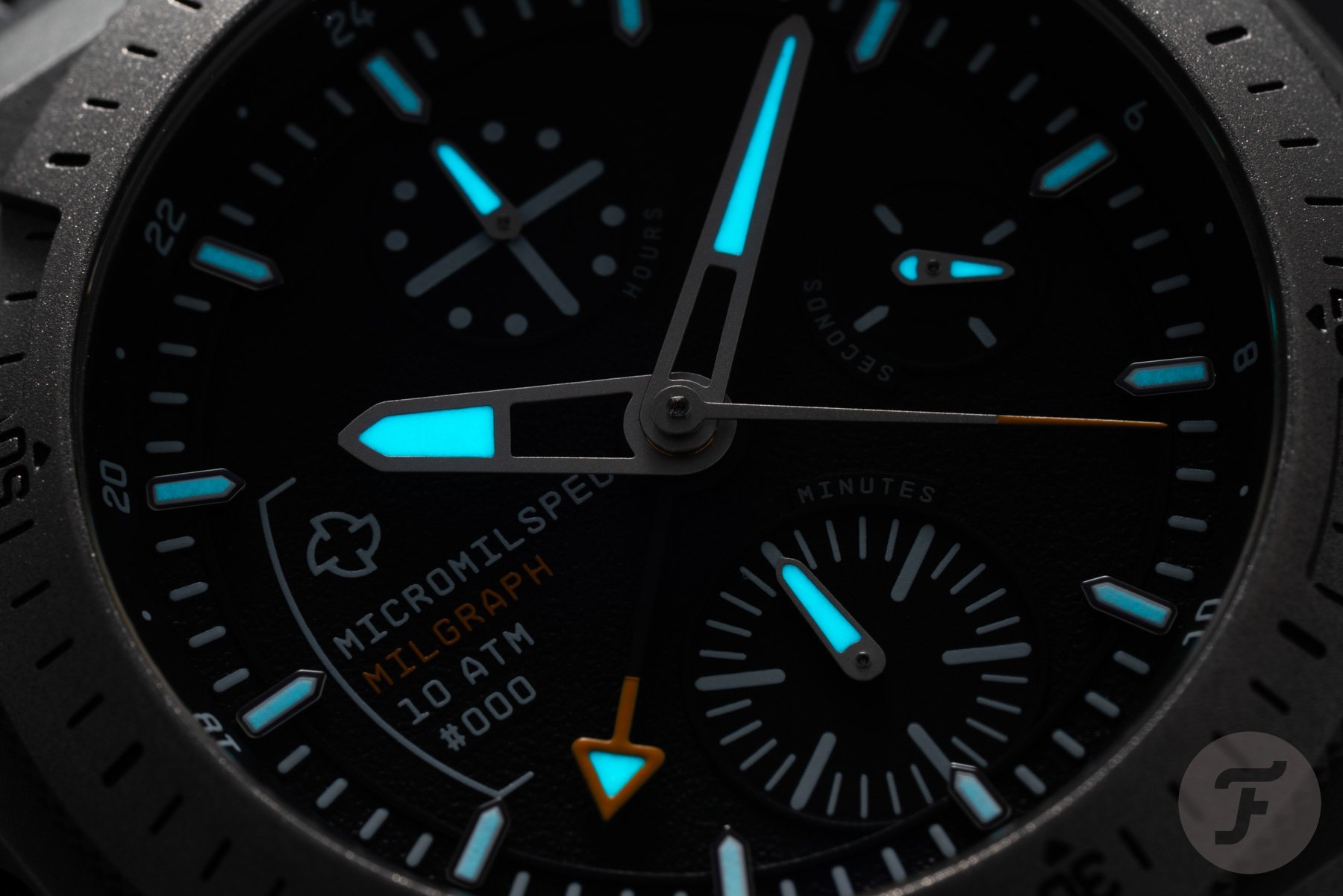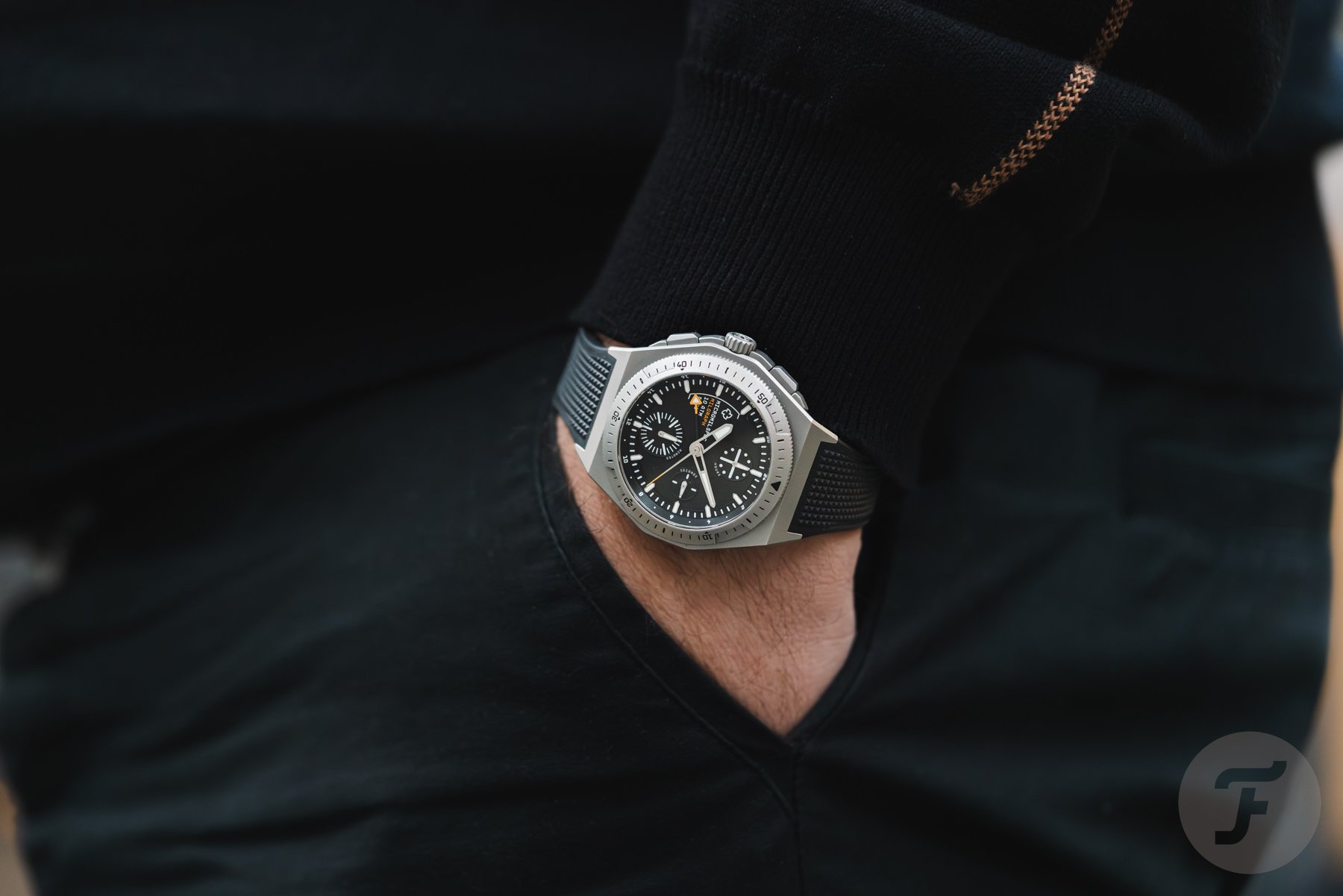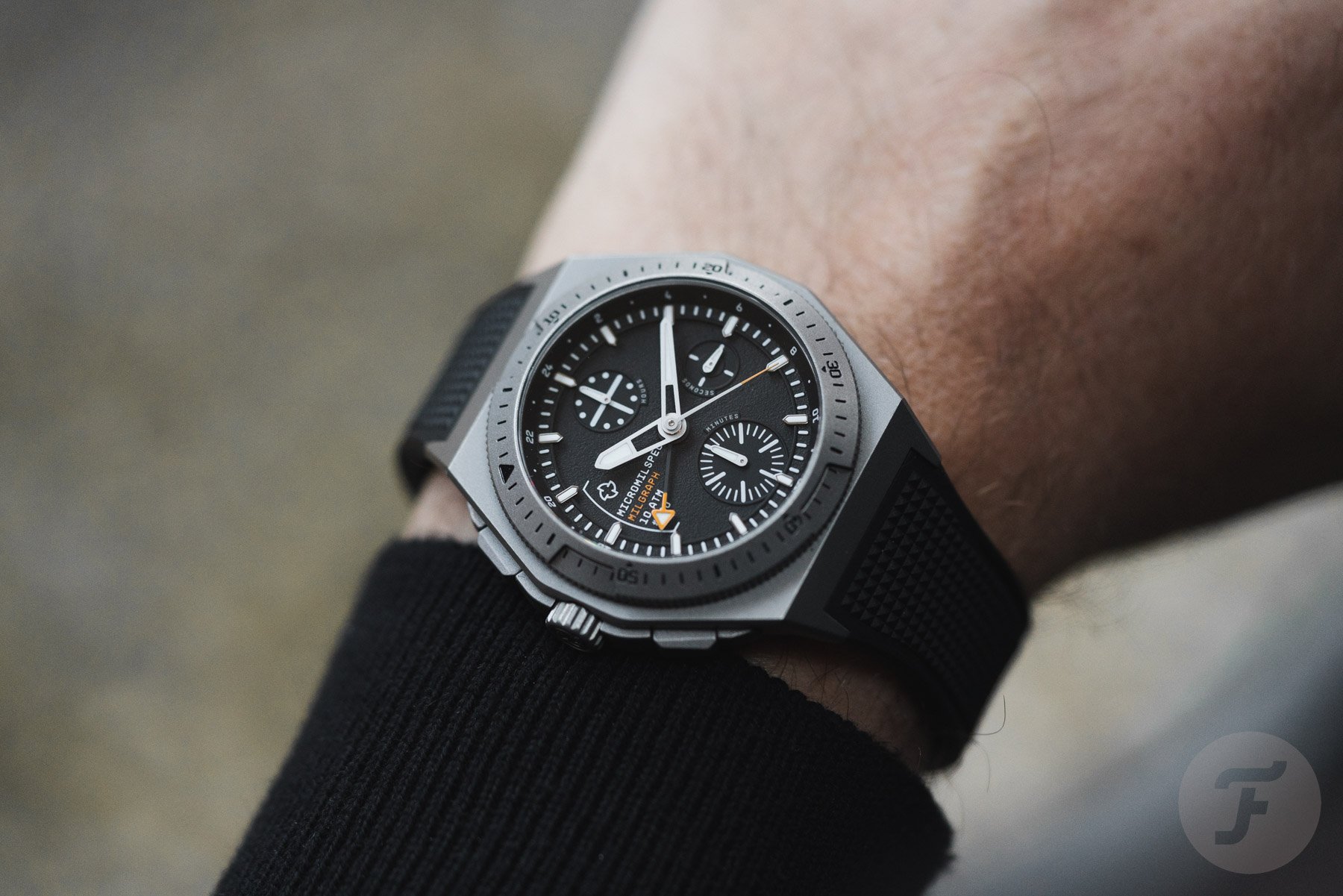Testing The Rugged Micromilspec Milgraph In Inhospitable Urban Conditions
Let’s start this review with a confession: I hate this time of year in the Netherlands. With gray skies for days on end, endless wet streets, howling winds, and inhospitable temperatures, it’s not always the most enjoyable place to be. It’s not necessarily that I can’t handle these conditions individually, but together, they are rather depressing. Combine cold temperatures with a bright blue sky, and the world looks inherently different. However, one watch that is perfectly equipped for these dreary conditions is the Micromilspec Milgraph. The watch made me smile countless times during these dark December days. Let me explain why.
When Micromilspec introduced the Milgraph in late August, there was quite a buzz surrounding the release. The Norwegian brand is known for creating custom watches for military units and first responders. The general public is slowly catching on, and civilians can now get their hands on some models. However, the brand will always focus on supplying its professional clients with timepieces first. It’s an approach I adore because it means the priority will always be to develop timepieces that perform well in the most challenging situations. To be able to benefit from that as a regular citizen is a great opportunity to get your hands on a special watch.
The story of the Micromilspec Milgraph
In the great stream of releases around Geneva Watch Days, the Milgraph didn’t get my proper attention. I noticed it but didn’t give it much more than a glance. The looks did pique my interest, though. I love a good tool watch created with the needs of professionals in mind. That’s also how the Milgaph came about. A nice detail is that my Fratello colleague Dave Sergeant helped Micromilspec bring the concept to life by lending a hand in designing the dial and suggesting the destro configuration. The result is a watch that oozes competence, and wearing it for a week only confirmed that to me.
Like some of you, I was reminded of the Vacheron Constantin Overseas Everest limited editions upon first seeing this watch. To be clear, that is a good thing! I love those two watches, and so I welcomed the reminder of them. But quickly after, I started appreciating the Milgraph in and of itself. There might be a resemblance at first glance, but if you look at the different Micromilspec watches, you will see a distinct design signature that defines the brand. I love this characteristic Scandinavian design style a lot; as it turns out, it’s the perfect style for practicality in the field.
Specs of the Micromilspec Milgraph
The Milgaph was originally developed for special operations forces and combines a chronograph with a GMT complication. On top of that, the destro configuration adds a twist to the watch that might seem surprising at first. However, the simple fact that the crown and pushers don’t dig into the wrist is very welcome for professionals on a mission. So, let’s talk specs. The Milgraph has a microblasted Grade 5 titanium case that measures 42mm in diameter, 15mm thick, and 50.3mm from lug to lug. It’s also water resistant to 100 meters. The microblasted finish was chosen to eliminate reflections, which can be pivotal during military missions. Additionally, it simply looks super cool.
The case features a characteristic bezel with an elapsed-time scale. Its design immediately stands out due to the four deep indents. This QuadGrip, as the brand calls it, adds practicality in turning the bezel and nice visual drama. As you can see in the pictures, the 60-minute scale continues underneath the bezel, so it does not interfere with the watch’s functionality. You would not need the QuadGrip as a regular civilian because the super-pronounced knurled edges make rotating the bezel very easy. The grip is great, and turning the bezel is an absolute joy. The sound and feel are crisp and confident, which is just what you would expect from a sturdy military watch.
The busy dial of the Milgraph
Within the case is an information-packed matte black dial. But despite the three sub-dials, the GMT function, and the branding, it is easy to navigate. The base is the 60-minute scale with the applied hour markers. On the rehaut, you will find a 24-hour GMT scale. The three sub-dials differ in size to create a visual hierarchy. The smallest is the running seconds at 3 o’clock.
The two chronograph registers are bigger because they are more important during timed missions. The largest is the 30-minute counter at 6 o’clock, and lastly, there is the 12-hour counter at 12 o’clock. While three differently sized registers would usually trigger my desire for symmetry, once again, the practicality that sparked this decision provides context and reason.
A modern dial design that makes sense with all its functionality
The branding is located at 9 o’clock. While I am usually not a fan of off-centered branding, it fits the dial layout flawlessly in this case. I love the little logo on top of the practical textual info and how a curvy bracket keeps everything together. It’s a seemingly simple stroke of genius because it prevents the elements from floating in an undefined space.
Overall, the dial configuration might not be the most logical regarding design and symmetry. But once you understand the context, every element falls into place, and you remember that you’re not just wearing a regular watch. One thing you may question is the absence of numerals in the sub-dials. But once you know what the individual sub-dials are for, reading them quickly is no problem at all.
A complementary set of hands
The handset is another stylish element firmly rooted in functionality. The broad hour and minute hands are skeletonized in one half, while the other half is filled with a rich slab of Super-LumiNova X1. The slim seconds hand features an orange tip, while the black GMT hand features an orange arrow-shaped tip.
Lastly, the hands in the sub-dials match the shape of the central hour and minute hands nicely, and they are also filled with lume for great nighttime readability. What stands out most to me when looking at the watch is how well all the elements fit together. They combine to create a distinctly modern GMT chronograph that feels balanced despite the seemingly quirky layout.
Micromilspec uses the La Joux-Perret L121 to power the watch. This automatic column-wheel chronograph caliber with a caller GMT function operates at 28,800vph, has 26 jewels, and offers a 60-hour power reserve. It is the perfect power train for the watch because it offers the functions of a great military timepiece.
Micromilspec offers the Milgraph on a texturized rubber or leather strap with a microblasted titanium tang buckle. The third option is a microblasted titanium H-link bracelet with a push-button butterfly clasp. We received the watch on the rubber strap, which I probably would have picked anyway. A week of wearing the watch confirmed that as well.
Wearing the Micromilspec Milgraph
After the lengthy explanation of the design and the different elements, I can be quite brief about wearing the Milgraph. It simply wears like a dream, especially considering its substantial size. The watch is lightweight thanks to the titanium case, and it’s ergonomically perfect for my 18.5cm wrist. From the moment I put the Milgraph on my wrist, I was super impressed. The tonneau-shaped case with its short, angular lugs is far from small at 42mm wide and 15mm thick, but it works well. Thanks to the lugs, the rubber strap connects to the case at a downward angle, naturally making it easy to wrap around the wrist.
The one thing I had to get used to the most was the destro configuration. More specifically, it took some time to adjust to the crown because you unscrew using your left hand. A quick fix is to turn the watch upside down, which will feel familiar. But you will get used to operating it with your left hand after doing it several times, so it’s good to get the practice in early. Pulling out the crown to the first position lets you adjust the GMT hand independently, and pulling it out to the second position allows you to adjust the main time. I found that it became a lot easier with a bit of practice.
A perfect everyday GMT chronograph
Operating the chronograph might initially seem daunting because, due to the configuration, the functions are upside down. You start and stop the chronograph by pushing the lower of the two pushers. But the great thing is that if you operate the chronograph with your right hand, that is exactly where your thumb is, so you will get used to that quickly. While it might take some neuro-linguistic reprogramming, you will find that it soon becomes easy.
While on the wrist, what also stands out is the brilliantly shaped case. It’s a modern, angular one, but the rounded edges and matte microblasted finish provide a gentler presence that keeps the watch from becoming too technical and cold. Add the great comfort to that, and you will understand why I hardly took the watch off my wrist during the week I spent with it.
Final thoughts on the Micromilspec Milgraph
During these long and dreary Dutch days, the Micromilspec Milgraph provided the necessary fun to make me smile. I went into this review without any specific expectations. While I liked the design upfront, the watch surprised me in all the right ways. Most importantly, I was thoroughly impressed by how well the watch wears. It fits perfectly on my 18.5cm wrist and, thanks to the lightweight Grade 5 titanium case, is easy to wear. Granted, if you have smaller wrists, this watch might not be for you. But if you can pull off a watch this size, it won’t disappoint.
Besides the great wearability, the combination of a GMT and a chronograph is brilliant. These two complications are not only practical during military missions but also happen to be the ones I would use regularly. My biggest fear was the added challenge of the destro configuration. Honestly, after a day or so, I got used to it, and it was smooth sailing. After a week of wearing the Milgraph, I handed it in reluctantly. I would have loved to spend more time with it. That wasn’t because I didn’t get a clear idea of what it was all about or couldn’t form an opinion. No, it was simply because I had tons of fun wearing it.
The best modern chronograph for the money
This begs the question of whether I would buy a Micromilspec Milgraph. The honest answer is a wholehearted “yes!” Now, I will add that I would pursue it at the right time because, at this point, I am not looking for a modern GMT chronograph; I have my sights set on different watches. Still, that doesn’t change the fact that I feel this is, hands down, the best chronograph that money can buy for its €3,500 price.
That’s also why it is no surprise that reservations for this year’s 50 pieces filled up in a flash. For now, you can only add your name to the waiting list in hopes of getting your hands on one in due time. I might have missed the initial hype surrounding the watch during Geneva Watch Days. But after spending time with the Micromilspec Milgraph, I perfectly understand what the excitement is all about. The Milgraph is Micromilspec’s best release yet, and incidentally, it’s one of this year’s best chronographs.




















